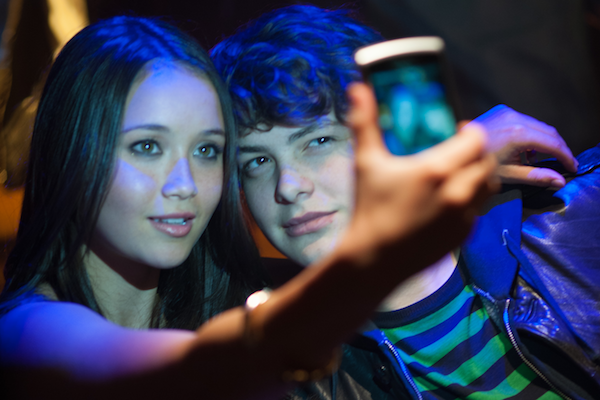
Based on the article, “The Suspects Wore Louboutins,” Sofia Coppola’s 2013 film The Bling Ring follows a handful of teenagers through Calabasas, CA as they break into a rob the homes of celebrities like Audrina Patridge, Paris Hilton, and Orlando Bloom. In truth, Coppola offers a tale of modern nihilism, wherein these new age Robin Hoods are the comparatively poor, robbing from the rich to elevate their own social status.
The causes for these crimes are many: absent fathers who are traveling to earn money to maintain their station in the upper-middle class; oblivious mothers who believe homeschooling will prevent their children from evil influences; a lax legal system that punishes extreme DWI with the task of picking up litter on the highway for a few days. Combined, these factors lead to an endemic sense of entitlement and indifferent to others.
Overall though, Coppola’s focus seems to be on the information provided by the Internet. Not only does it provide the young criminals Rebecca (Katie Chang) and Marc (Israel Broussard) with the celebrities’ addresses, but Google Maps (or some alternate version renamed for the film) provides an overhead layout of available entrances and exits, while the breadth of celebrity-news websites exposit where the celebrities will – or most importantly – won’t be. Most importantly, the Web provides an undue sense of equanimity. It – along with the cartoonized celebrity news channels like TMZ – fetishize celebrities into characters like they are on any of MTV’s reality shows. In a celebrity-obsessed culture, Audrina Patridge and Paris Hilton are not real. They are characters. Their property has not been earned, and it is not private. It is public.
The lack of importance their property draws is doubly emphasized inasmuch as none of the celebrities notice their property missing. In a sense, there is such excess that it’s impossible to keep track of. This is in no way meant to imply that these celebrities deserved to be robbed – though leaving a multi-million dollar home unlocked just begs for intruders. Rather, the initial lack of news coverage drawn to the crime only serves to encourage the crime. This is made doubly complicated when the majority of news coverage depicted in the film centers on the literal and figurative trials of Mischa Barton and Lindsay Lohan, as opposed to anything else that might have been going on in the world at the time.
At its core, the film suggests that the Internet provides the illusion that everything is public. The Bling Ring also illuminates the idea that the freedom we have adopted on account of ubiquitous access is just as constricting as it is liberating. This applies for both the wealthy and the not. Each blip in the celebrity life is charted and followed by dime-a-dozen paparazzi and anyone with $10 a month to run a website. At the same time – and perhaps in an attempt to keep up with the Joneses – we record each moment on Twitter or Facebook, documenting our lives in an attempt to create our own ubiquity and celebrity. However, this constant documenting, photographing, and updating, while offering our good sides, also highlight our shortcomings and our darkest intentions.



